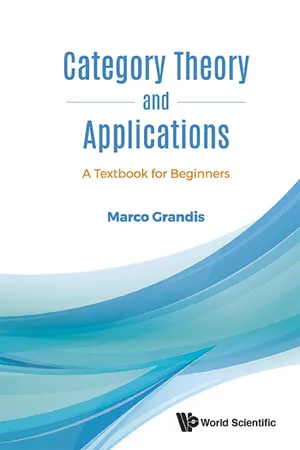
- 304 pages
- English
- ePUB (mobile friendly)
- Available on iOS & Android
About This Book
-->
Category Theory now permeates most of Mathematics, large parts of theoretical Computer Science and parts of theoretical Physics. Its unifying power brings together different branches, and leads to a deeper understanding of their roots.
This book is addressed to students and researchers of these fields and can be used as a text for a first course in Category Theory. It covers its basic tools, like universal properties, limits, adjoint functors and monads. These are presented in a concrete way, starting from examples and exercises taken from elementary Algebra, Lattice Theory and Topology, then developing the theory together with new exercises and applications.
Applications of Category Theory form a vast and differentiated domain. This book wants to present the basic applications and a choice of more advanced ones, based on the interests of the author. References are given for applications in many other fields.
--> Contents:
- Introduction
- Categories, Functors and Natural Transformations
- Limits and Colimits
- Adjunctions and Monads
- Applications in Algebra
- Applications in Topology and Algebraic Topology
- Applications in Homological Algebra
- Hints at Higher Dimensional Category Theory
- References
- Indices
-->
--> Readership: Graduate students and researchers of mathematics, computer science, physics. -->
Keywords:Category TheoryReview: Key Features:
- The main notions of Category Theory are presented in a concrete way, starting from examples taken from the elementary part of well-known disciplines: Algebra, Lattice Theory and Topology
- The theory is developed presenting other examples and some 300 exercises; the latter are endowed with a solution, or a partial solution, or adequate hints
- Three chapters and some extra sections are devoted to applications
Frequently asked questions
Information
1
Categories, functors and natural transformations
1.1 Categories
1.1.1 Some examples

Table of contents
- Cover page
- Title page
- Copyright
- Dedication
- Preface
- Contents
- Introduction
- 1 Categories, functors and natural transformations
- 2 Limits and colimits
- 3 Adjunctions and monads
- 4 Applications in Algebra
- 5 Applications in Topology and Algebraic Topology
- 6 Applications in Homological Algebra
- 7 Hints at higher dimensional category theory
- References
- Index